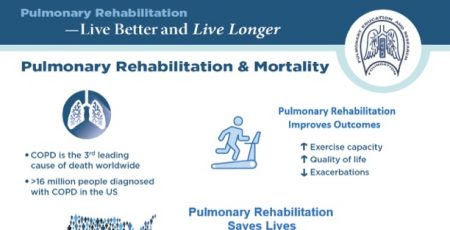09 Mar How and Why to Exercise Before & After A Lung Transplant
If you’re facing a lung transplant, your ability to exercise is limited by your reduced lung function. However, it’s extremely important to exercise before and after your transplant, because you’ll keep your body fit and maximize the lung function that you have. Exercise also will make you stronger and better able to recover from surgery, and will enhance your ability to use your new lung or lungs after you recover.
The Physiological Benefits Of Exercising
When you exercise, your breathing increases in rate and depth, in an effort to bring more air into your lungs. The more air you bring in, the more oxygen can be transported to your muscles and heart, helping them to work harder and better. The more you work your muscles and heart, the stronger they become and the better they are able to use the oxygen that’s delivered to them. With regular exercise and conditioning, your body will perform better, using the oxygen that your lungs deliver to it. In other words, with impaired lung function, a fit body will make better use of the limited oxygen that’s delivered to it than an unfit body will. So, the somewhat paradoxical truth is that the more you are short of breath, the more important it is that you work your muscles and your heart by exercising. Most people who follow an exercise plan before lung transplant surgery will have more muscle strength, endurance and a better quality of life after transplantation
How To Exercise Before A Lung Transplant
This doesn’t mean that you should start running five miles a day, however. You must exercise within the limitations that your lungs place on you. Take advantage of pulmonary exercise training or pulmonary rehabilitation (PR) – which are specialized methods of exercising, taking into account the limited reserves of your lungs.
Before you begin, consult with your healthcare provider on the best starting point for your exercise program. If you wish to enroll in a formal PR program, you will need a referral from your healthcare provider.
What Is Involved In A Pulmonary Rehabilitation Program?
A formal PR program is a specialized exercise program designed for patients with impaired lung function, that is done in a facility, either as an inpatient or an outpatient. You will exercise according to a personalized plan under the supervision of trained staff, who will work with you to start at a level that is comfortable for you and then increase your intensity and duration over time. You’ll also receive education and exercise designed specifically to help manage your breathing problems.
Types Of Exercise In Pulmonary Rehabilitation
There are three basic types of exercise you’ll perform in pulmonary rehabilitation: endurance, interval, and resistance training. Endurance training is continuous, high-intensity exercise, usually lasing 20 to 60 minutes. Walking or biking on a stationary bicycle are two forms of endurance training. It’s recommended that you do this type of training three to five times a week.
If you can’t tolerate endurance training, your therapist might recommend interval training instead, in which periods of high intensity exercise are alternated with periods of lower intensity exercise or periods of rest.
Resistance training is the “muscle” complement to endurance or interval training; you lift weights in order to train and strengthen specific muscle groups.
All forms of training in a PR program are conducted under the supervision of a therapist to ensure your safety. As you proceed through your program, your therapist will also advise you on how to continue to exercise at home to maintain endurance and muscle strength.
Exercise After Your Transplant
You might think that after a lung transplant, PR training isn’t necessary, since you now will have better functioning lungs; but quite the opposite is true. It’s extremely important to continue with your PR program after surgery in order to keep your body fit, so that it can take advantage of the new lung function you’ve been provided. You should, of course, exercise under the supervision of a healthcare team until you’ve been advised that it is safe for you to exercise on your own. With consistent exercise, you should be rewarded with improved conditioning and the ability to return to some of the activities you used to do before your lung function became impaired.
Information for this article was obtained from the American Thoracic Society Journal.





No Comments